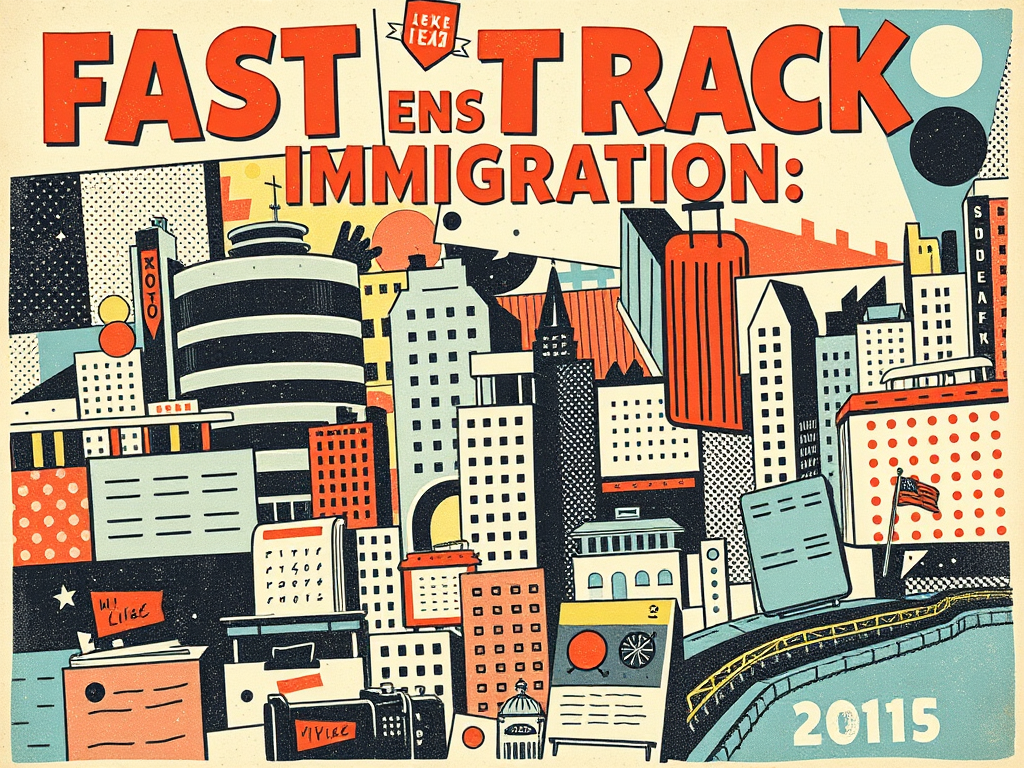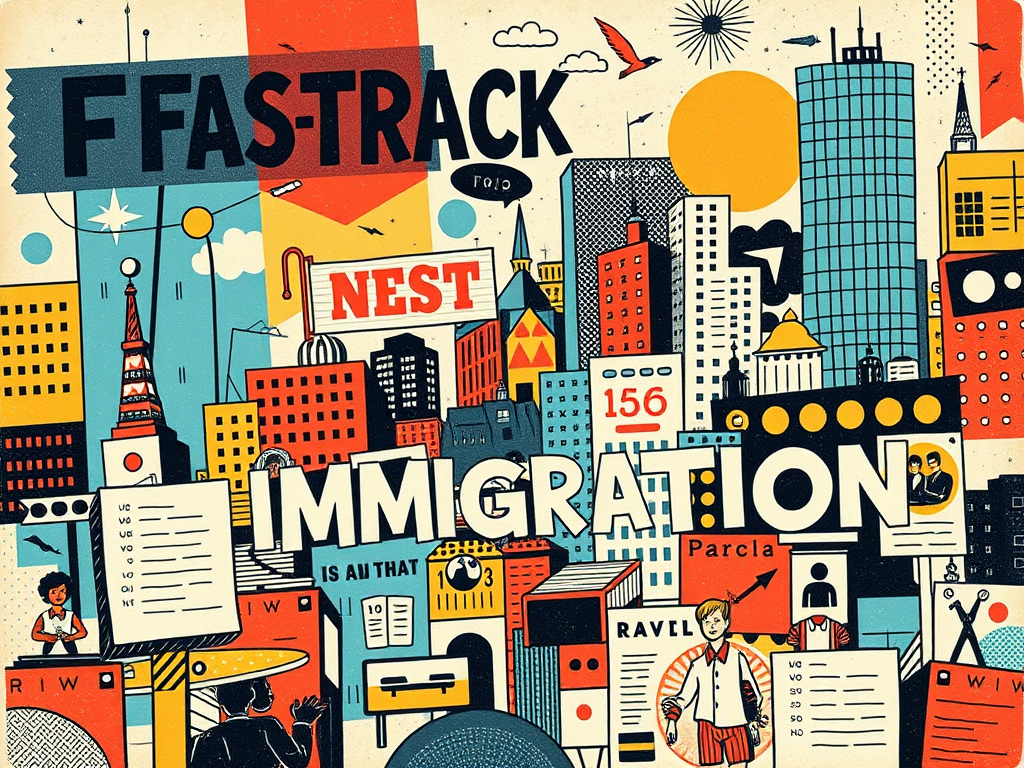
Golden Visa vs. Standard Immigration: Fast-Track Residency Pros and Cons
Reading time: 12 minutes
Table of Contents
- Introduction to Golden Visas and Standard Immigration
- Golden Visa Programs: An Overview
- Standard Immigration Pathways
- Comparing Golden Visas and Standard Immigration
- Economic Impact of Golden Visa Programs
- Controversies and Criticisms
- Future Outlook for Residency-by-Investment
- Conclusion
- FAQs
1. Introduction to Golden Visas and Standard Immigration
In an increasingly globalized world, the pursuit of residency and citizenship in foreign countries has become a significant trend among high-net-worth individuals and families seeking new opportunities, enhanced mobility, and improved quality of life. Two primary pathways have emerged for those looking to establish themselves in a new country: Golden Visa programs and standard immigration routes. This comprehensive analysis will delve into the intricacies of both options, exploring their advantages, disadvantages, and economic implications.
As we navigate through this complex landscape, it’s essential to understand that the choice between a Golden Visa and standard immigration is not merely a matter of personal preference but often a strategic decision influenced by various factors, including financial capacity, time constraints, and long-term objectives. The global mobility landscape has evolved dramatically in recent years, with countries increasingly recognizing the potential economic benefits of attracting foreign investment through residency programs.
2. Golden Visa Programs: An Overview
Golden Visa programs, also known as residency-by-investment schemes, offer a fast-track route to residency for individuals willing to make a significant investment in the host country. These programs have gained popularity over the past decade, with numerous countries implementing their versions to attract foreign capital and stimulate economic growth.
Key Features of Golden Visa Programs
- Investment Requirements: Typically involve substantial financial commitments, often in real estate, government bonds, or business ventures.
- Expedited Processing: Offer significantly faster approval times compared to standard immigration routes.
- Minimal Physical Presence: Many programs have lenient residency requirements, allowing investors to maintain their primary residence elsewhere.
- Family Inclusion: Often extend residency rights to the investor’s immediate family members.
- Path to Citizenship: Some programs offer a clear route to citizenship after a specified period of residency.
Popular Golden Visa destinations include Portugal, Spain, Greece, and Malta within the European Union, as well as countries like the United States (EB-5 program) and Australia (Significant Investor Visa). Each program has its unique requirements and benefits, catering to different investor profiles and objectives.
For instance, buying real estate in greece with a minimum investment of €250,000 can qualify an individual for the Greek Golden Visa program, offering residency rights and visa-free travel within the Schengen Area. This has made Greece an attractive option for investors seeking a foothold in Europe at a relatively lower investment threshold compared to some other EU countries.
3. Standard Immigration Pathways
Standard immigration pathways represent the traditional routes to residency and citizenship in foreign countries. These methods typically involve more stringent requirements and longer processing times but are generally more accessible to a broader range of applicants.
Common Standard Immigration Routes
- Work-Based Immigration: Gaining residency through employment in the host country.
- Family Reunification: Joining family members who are already residents or citizens.
- Study Visas: Pursuing education in the host country with potential pathways to post-study work and residency.
- Retirement Visas: Designed for retirees with sufficient pension income.
- Humanitarian Programs: Including asylum and refugee resettlement schemes.
These pathways often require applicants to demonstrate language proficiency, cultural integration, and a commitment to residing in the host country for extended periods. While they may not offer the same speed and flexibility as Golden Visa programs, standard immigration routes are often viewed as more merit-based and aligned with traditional notions of citizenship and national identity.
4. Comparing Golden Visas and Standard Immigration
To understand the relative merits of Golden Visa programs and standard immigration pathways, it’s crucial to compare them across several key dimensions:
Processing Time and Complexity
Golden Visa programs typically offer significantly faster processing times, often measured in months rather than years. This expedited timeline can be particularly attractive for investors seeking quick solutions to residency needs. Standard immigration pathways, conversely, can involve lengthy waiting periods and complex bureaucratic processes, which may be deterrents for some applicants.
Financial Requirements
The financial barrier to entry for Golden Visa programs is substantially higher than most standard immigration routes. While this makes them inaccessible to many, it also ensures a level of exclusivity and potential economic impact that is attractive to host countries. Standard immigration pathways generally have lower financial thresholds but may require proof of ongoing income or employment.
Flexibility and Mobility
Golden Visa programs often offer greater flexibility in terms of residency requirements and the ability to maintain business and personal interests in multiple countries. Standard immigration typically demands more substantial physical presence and integration into the host country’s society and economy.
Path to Citizenship
Both routes can lead to citizenship, but the timelines and requirements differ. Some Golden Visa programs offer a clear and relatively quick path to citizenship, while others maintain a distinction between residency and citizenship rights. Standard immigration routes usually have more stringent citizenship requirements, including longer residency periods and language proficiency tests.
Social and Cultural Integration
Standard immigration pathways often emphasize cultural integration and language acquisition as part of the residency and citizenship process. Golden Visa programs, while not necessarily precluding integration, typically place less emphasis on these aspects, focusing instead on the economic contributions of investors.
5. Economic Impact of Golden Visa Programs
The economic implications of Golden Visa programs have been a subject of intense debate and analysis. Proponents argue that these schemes bring significant foreign direct investment (FDI) into host countries, stimulating economic growth and job creation. Critics, however, contend that the benefits may be overstated and come with potential risks.
Positive Economic Effects
- Capital Injection: Golden Visa programs bring substantial foreign capital into various sectors, particularly real estate and government bonds.
- Job Creation: Investments in businesses and real estate development can lead to new employment opportunities.
- Tax Revenue: Wealthy investors may contribute significantly to the tax base of host countries.
- Economic Diversification: Some programs aim to attract investments in specific sectors, potentially helping to diversify the economy.
Potential Drawbacks and Risks
- Real Estate Bubbles: Concentrated investment in property markets can lead to inflated prices, potentially pricing out local buyers.
- Money Laundering Concerns: The influx of large sums of foreign capital raises concerns about the potential for financial crimes.
- Social Inequality: The perception that citizenship is “for sale” can exacerbate social tensions and inequality.
- Regulatory Challenges: Ensuring proper vetting and monitoring of investors can strain regulatory resources.
The economic impact of Golden Visa programs is closely monitored by policymakers and economists. For instance, Portugal’s Golden Visa scheme has attracted billions of euros in investment since its inception in 2012, with a significant portion directed towards the real estate sector. This has contributed to a boom in property development but has also raised concerns about housing affordability in major cities like Lisbon and Porto.
6. Controversies and Criticisms
Golden Visa programs have faced significant scrutiny and criticism from various quarters, including international organizations, transparency advocates, and some political factions within host countries.
Key Areas of Concern
- Security Risks: Concerns about inadequate due diligence potentially allowing individuals with criminal backgrounds to gain residency.
- Tax Evasion: Fears that these programs may be used as vehicles for tax avoidance or evasion.
- EU Pressure: The European Union has expressed reservations about Golden Visa programs within member states, citing risks to the integrity of the Schengen Area.
- Social Equity: Critics argue that these programs create a two-tiered immigration system that favors the wealthy.
- Geopolitical Implications: Concerns about the potential influence of foreign investors on domestic politics and policy.
In response to these criticisms, many countries have implemented stricter vetting processes and more transparent reporting mechanisms for their Golden Visa programs. Some, like Cyprus, have even suspended or terminated their programs following investigations into alleged abuses.
7. Future Outlook for Residency-by-Investment
The landscape of global mobility and residency-by-investment is continuously evolving, shaped by economic trends, geopolitical events, and changing public attitudes. Several factors are likely to influence the future of Golden Visa programs and standard immigration pathways:
Emerging Trends and Predictions
- Increased Regulation: Expect tighter controls and more stringent due diligence processes for Golden Visa programs.
- Diversification of Investment Options: Programs may shift focus from real estate to more diverse investment portfolios, including technology and sustainable development projects.
- Digital Nomad Visas: The rise of remote work may lead to new visa categories that blur the lines between traditional residency and investment-based programs.
- Climate Resilience: Countries may increasingly use residency programs to attract investments in climate adaptation and mitigation projects.
- Blockchain and Cryptocurrency Integration: Some jurisdictions may explore accepting digital assets as part of their investment requirements.
The COVID-19 pandemic has also reshaped priorities for both investors and host countries. There’s an increased focus on health security, remote work capabilities, and quality of life factors in residency decisions. This may lead to a recalibration of both Golden Visa offerings and standard immigration policies to address these new realities.
8. Conclusion
The choice between Golden Visa programs and standard immigration pathways represents a complex decision influenced by personal circumstances, financial capacity, and long-term objectives. While Golden Visas offer expedited processes and flexibility for high-net-worth individuals, they come with higher costs and potential controversies. Standard immigration routes, though often more time-consuming and demanding, provide a more accessible path for a broader range of applicants and may foster deeper social integration.
As the global landscape continues to evolve, both Golden Visa programs and standard immigration policies are likely to undergo significant transformations. Countries will need to balance the economic benefits of attracting foreign investment with concerns about security, social equity, and national identity. For potential immigrants and investors, careful consideration of all options, thorough due diligence, and expert guidance will be crucial in navigating this complex and dynamic field.
Ultimately, the future of global mobility and residency options will be shaped by the ongoing dialogue between economic imperatives, social values, and the ever-changing nature of citizenship in an interconnected world. As we move forward, the most successful approaches will likely be those that can adapt to these evolving dynamics while maintaining integrity, transparency, and fairness in their immigration systems.
FAQs
-
Q: How long does it typically take to obtain residency through a Golden Visa program compared to standard immigration?
A: Golden Visa programs generally offer much faster processing times, often granting residency within 3-6 months. Standard immigration pathways can take anywhere from 1-5 years, depending on the country and specific circumstances.
-
Q: Are Golden Visa investments guaranteed to provide returns?
A: No, Golden Visa investments, like any investments, carry risks. While some programs may offer government-backed options, returns are not guaranteed, and due diligence is essential.
-
Q: Can Golden Visa residency lead to citizenship in all countries?
A: Not necessarily. While many Golden Visa programs offer a path to citizenship, the requirements and timelines vary significantly between countries. Some programs maintain a clear distinction between residency and citizenship rights.
-
Q: Are there any Golden Visa programs that don’t require a large financial investment?
A: Most Golden Visa programs require substantial investments. However, some countries offer “talent visas” or “startup visas” which may have lower financial thresholds but require specific skills or business plans.
-
Q: How have recent global events affected Golden Visa programs and standard immigration policies?
A: Events like the COVID-19 pandemic have led to temporary suspensions or modifications of many immigration programs. There’s an increased focus on health security, remote work capabilities, and digital processing in both Golden Visa and standard immigration pathways.




